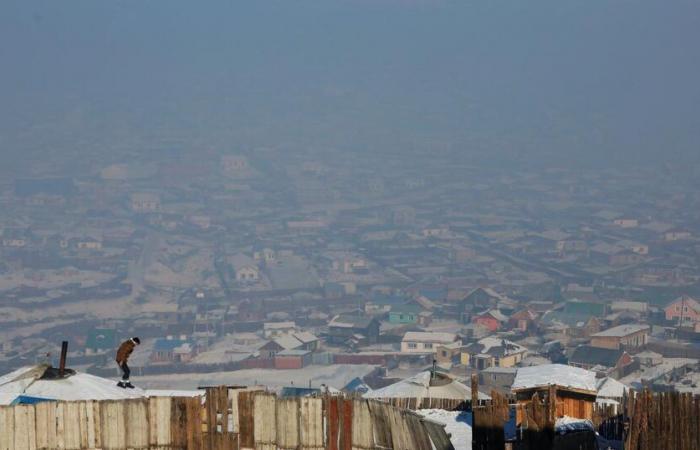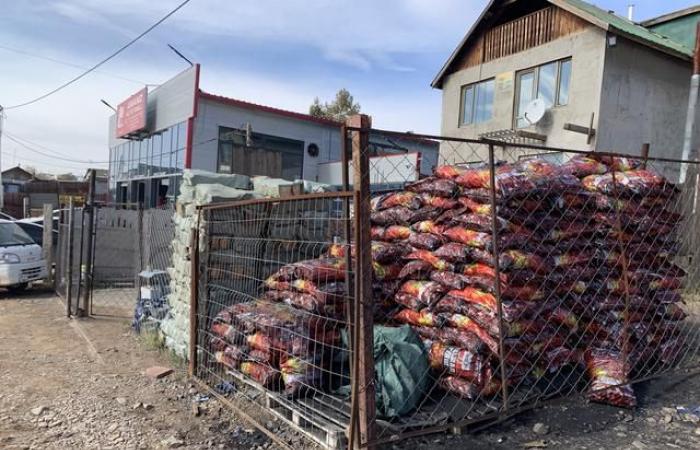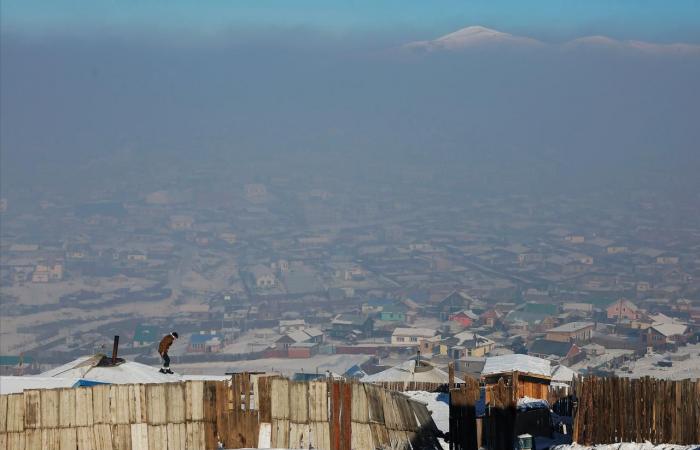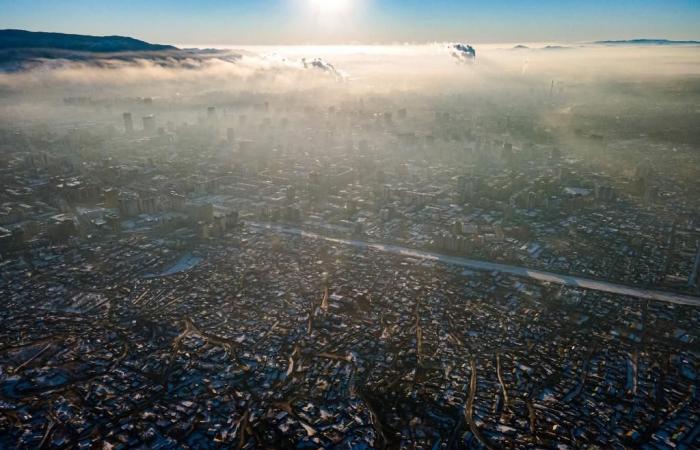The coldest capital in the world, Ulaanbaatar, in Mongolia, is also one of the most polluted in winter. Surrounded by yurts, the town is suffocated by thick smog emanating from the suburbs located on the sides of the surrounding hills.
In these poor suburbs, often populated by former nomadic breeders, thousands of stoves spew acrid smoke. Wood, coal, trash or used tires: anything is good to escape freezing temperatures.
Warm in their yurt, Oyngarle and his daughter prepare Buuz. These traditional ravioli stuffed with horse and sheep meat are steamed in a basin placed on the stove, in the center of the circular enclosure covered with felt.
“That’s really the most important part,” Oyngarle emphasizes. “It’s essential! The majority of households in the district rely on it for heating. Some burn wood mixed with crushed tires. But the most common now are charcoal briquettes. Some families have electricity and heat with radiators But this is not very common, most use coal,” she says.
This coal, which the Mongolian subsoil is full of, is synonymous with survival for the more than 850,000 inhabitants of the “yurt district”. Among them, many are former nomads who came to settle in wooden cabins or under traditional tents.
Subsidized coal briquettes
In the coldest of winter, when the thermometer drops to around -40°C, Oyngarle burns more than 100 kilos of coal per week. The fuel comes in the form of refined briquettes, described as “cleaner”, supplied and subsidized by the authorities.
“When all the stoves are lit, the smoke invades everything outside,” says Oyngarle. “The smog is very thick. The worst is in the morning or at the end of the day, when people come home from work. Your throat really hurts.”
From December to March, the concentration of fine particles in the air exceeds more than 14 times the threshold accepted by the World Health Organization. Toxic air inhaled by the nearly 1.7 million inhabitants of the Mongolian capital. The problem has worsened in recent years due to strong demographic growth in Ulaanbaatar, fueled by the settling of nomads. The city now concentrates around half of the country’s population.
Refugees from “Dzud”
The evocation of this stale environment plunges Oyngarle into the memory of the pastures left almost a decade ago: “I think about it all the time. The fresh air that we breathe deeply, the wide open spaces, freedom… But in 2015, the Dzud took our 150 sheep,” she explains.
Dzud, “disaster” in Mongolian, refers to an increasingly frequent climatic anomaly. An early mild spell precipitates the melting of snow in winter. The sudden return of the cold freezes the ground under a layer of impenetrable ice, which the animals scrape in vain. Weakened, they succumb to hunger and the cold. Last winter, the nomads watched helplessly as three million animals perished.
Once a month, Tamberlsaan travels to the capital from his meadows in his old Japanese 4×4 filled with butchered sheep. Dressed in his traditional costume, this breeder sells entire pieces to passers-by.
“Those who lose their animals have no choice. There is nothing else apart from breeding there. They come here to find work,” he notes.
“Many also come to send their children to school in the city. Previously, nomads returned to the countryside after some time in the city. But due to Dzudnow recurring, they remain. There are fewer and fewer of us living in the steppe,” he says.
![In winter, a layer of smoke released from heaters covers the Mongolian capital. [REUTERS - Rentsendorj Bazarsukh] In winter, a layer of smoke released from heaters covers the Mongolian capital. [REUTERS - Rentsendorj Bazarsukh]](https://euro.dayfr.com/content/uploads/2024/11/02/2348963ff6.jpg)
An exodus a source of tension
This forced rural exodus is a source of tension when the cold arrives. Living in a popular residential area, a 35-year-old father looks towards the “yurt district”, located on the hillside opposite.
“This hell is because of all the coal they burn,” he says. “I have four children aged 1 to 10. Winter is hellish. They suffer from chronic bronchitis. And when they have a cold or flu, it cannot be cured naturally. We have to resort to antibiotics “Doctors tell us that the weak immune response is linked to pollution,” he laments.
![Many nomads uprooted by climate change are settling in Ulaanbaatar, pictured here covered in its winter smog on January 16, 2022. [AFP - BYAMBASUREN BYAMBA-OCHIR] Many nomads uprooted by climate change are settling in Ulaanbaatar, pictured here covered in its winter smog on January 16, 2022. [AFP - BYAMBASUREN BYAMBA-OCHIR]](https://euro.dayfr.com/content/uploads/2024/11/02/c49a986190.jpg)
A symptom of poverty
Zoljargal Purevdash has been confronted with these criticisms for years. A native of the “yurt district”, the 35-year-old director is behind a highly acclaimed film last year: “If only I could hibernate”. Hailed at the last Cannes Film Festival, his work is in the running for the Oscars in the international category.
“I wrote ‘If Only I Could Hibernate,’ the story of a 15-year-old boy who has nothing to burn in his stove, but who does everything he can to get a good education and s “Through her life and her efforts, I wanted to show my people the problems caused by poverty,” explains the filmmaker.
External content
This external content cannot be displayed because it may collect personal data. To view this content you must authorize the category Social networks.
Accept More info
“I grew up in the yurt district and I know that no one burns coal to poison anyone. They have no choice. It’s the only solution they have for affordable heating and to resist the brutal cold of winter. I’m so shocked that people don’t understand this. What we inhale is not pollution. It’s the poverty of our sisters and brothers. , she maintains.
A symptom of the impoverishment of breeders due to climate change, the smog of Ulaanbaatar is also reinforced by the unequal economic development of the country. Despite sustained growth – driven by coal mining – the Mongolian population below the poverty line remains frozen at nearly 30%. A population of which a significant part is crowded around the capital.
External content
This external content cannot be displayed because it may collect personal data. To view this content you must authorize the category Infographics.
Accept More info
Michael Peuker/ami









